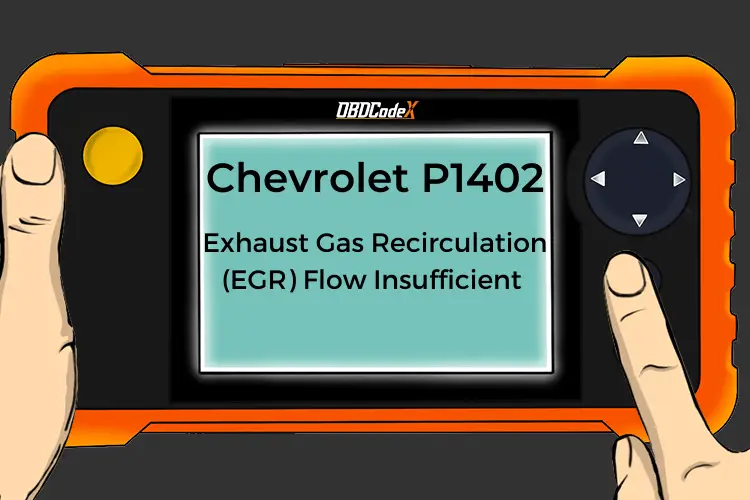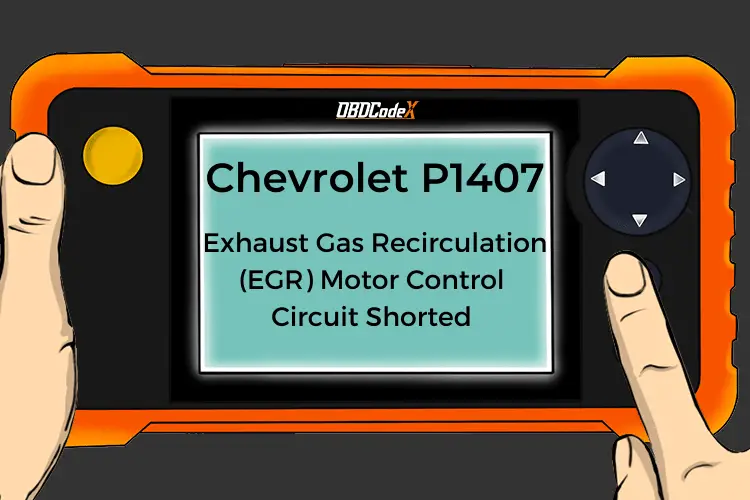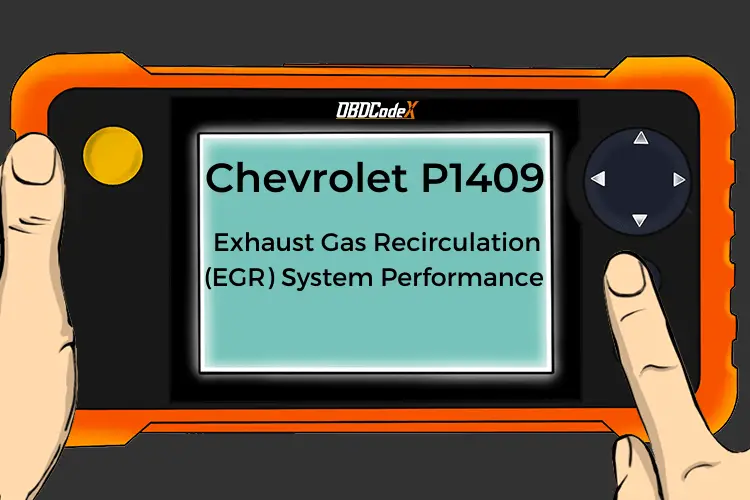P2145: Exhaust Gas Recirculation Vent Control Circuit High
Is your scanner showing P2145?
No worries. We'll show you what it means and how to deal with it.
P2145: Exhaust Gas Recirculation Vent Control Circuit High
OVERVIEWWhat Does The P2145 Code Mean?
EGR (Exhaust gas recirculation) systems are constantly being monitored and adjusted by the ECM (Engine control module) while we are driving our vehicles. The EGR systems allows your vehicle’s engine to reuse air/fuel mixtures that have gone through the combustion process but has yet to burn completely and efficiently. By the EGR recycling this “semi-burnt” mixture and reintroducing it to the engine, it single handedly increases fuel economy, not to mention improved overall vehicle emissions as well.
These days, most EGR valves are controlled electronically via electrical solenoids, mechanically via vacuum controlled solenoids and various other possible ways depending on your make and model. The EGR vent solenoid is mainly used to discard unneeded recyclable exhaust.
Typically they vent this un-recycled exhaust back into the exhaust system to vent into the atmosphere after passing through the catalytic converters, resonators, mufflers, etc. It is important to note that the catalytic converter will burn most of the unburnt fuel present to prevent from spiking the vehicle’s emissions. The exhaust gas recirculation vent control circuit may be referring to one particular wire that is causing the fault, make sure to refer to your service manual to pinpoint what physical circuit you are working with here.
While monitoring and adjusting numerous sensors, switches, not to mention other systems, the ECM (engine control module) has activated P2145 and/or related codes (P2143and P2144) to let you know there is a problem with your exhaust gas recirculation vent control circuit.
With P2145, it means a high voltage condition has been detected within the EGR exhaust gas recirculation vent control electrical circuit.
What Are The Symptoms Of The P2145 Code?
Symptoms of a P2145 diagnostic code may include:
- Decreased engine power
- Rough engine idle
- Poor acceleration
- Poor fuel economy
- CEL (check engine light) on
- Engine misfire-like symptom
What Are The Potential Causes Of The P2145 Code?
Causes for this P2145 code may include:
- Dirty/clogged EGR (exhaust gas recirculation valve)
- EGR vent solenoid defective
- EGR vent plugged
- Vacuum leak
- Kinked vacuum line
- Connector issue
- Wiring issue (open, corroded, chafed, short, etc.)
- ECM issue
How Serious Is This P2145 Code?
Severity-wise, I would say this fault is moderately severe and I will tell you why. The EGR (exhaust gas recirculation) system in not a required system for the operation of the engine.
That said, it does improve emissions and also helps your engine running smoothly in varying conditions so its operation is fundamental if you want your vehicle to run and function optimally. Not to mention the fact that, if left long enough the soot that goes through these systems could accumulate and cause future problems/issues. Keep your EGR maintained properly to avoid any headaches.
How Can You Fix The P2145 Code?
The first step in the troubleshooting process for any malfunction is to research the Technical Service Bulletins (TSB) for known issues with the specific vehicle.
Advanced diagnostic steps become very vehicle specific and may require the appropriate advanced equipment and knowledge to perform accurately. We include basic steps below but refer to a vehicle year/make/model/powertrain specific repair guide for specific steps for your vehicle.
Basic Step #1
First thing you will want to do is let your vehicle’s engine cool down. Most times EGR (exhaust gas recirculation) systems are very hot by nature given that they are usually mounted directly to the exhaust system. That said, if you do not let the engine cool adequately, you can risk burning yourself.
Like mentioned, EGR valves a lot of time are mounted directly on the exhaust. The vent solenoids, that control the EGR’s venting, are mounted anywhere in the engine bay, most times on the firewall. Generally speaking, the vent solenoid is a vacuum controlled solenoid so there are potentially many rubber vacuum lines running from this to the EGR system.
Remember how hot it gets here? These vacuum lines do not stand well to these temperatures so make sure to inspect these lines thoroughly while you are inspecting the surroundings. Any burnt or broken vacuum line should be replace or repaired. Lines are inexpensive so I always recommend overhauling all the lines with new, especially if you find one that is deteriorated, if one went bad in this way, chances are the others aren’t far away.
Basic Step #2
Make sure to thoroughly verify the integrity of the harnesses involved. They do run along and around the exhaust so it would be a good idea to tie up any loose wires or harnesses out of the way. If you find a burnt harness and/or wire, solder connections and make sure to insulate accordingly. Inspect vent solenoid for cracks and/or water intrusion.
Given the fact that these sensors are subject to the elements and are made out of plastic, for the most part, should make you aware of some of the possible faults. Also, ensure connectors are making an adequate electrical connection and that the tabs are intact and not broken.
Basic Step #3
If accessible and convenient, you could remove EGR valve to check out its condition. These valves are subject to a meaningful amount of soot. Use carburetor cleaner and a toothbrush to remove soot from any stubborn areas.
Recommended Parts
Below are some recommended auto parts to help you address the trouble code affecting your vehicle and get it running smoothly again:
>>> EGR Valve Vacuum Solenoids/ EGR Vent Solenoids
>>> EGR Valve
>>> ECU
Note: During the purchasing process, please check carefully whether the part you want to buy fits your car!
Reference Sources
P2145 Exhaust Gas Recirculation Vent Control Circuit High, OBD-Codes.




